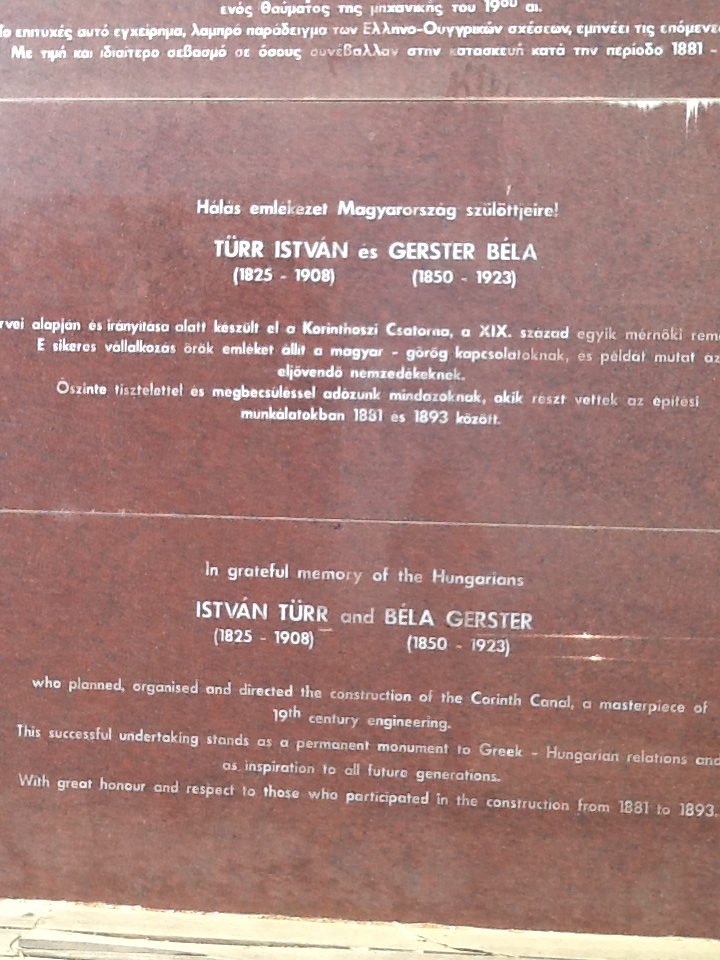Did you know that the Corinth Canal in Greece was planned and built by Hungarians?

Hungarians helped to design and build the canal, which was a millennia-long dream do Greek people, so their work is commemorated even today. And did you know that there was a Greek billionaire who gave 20 thousand more forints for the Hungarian Academy of Sciences than its founder, István Széchenyi, the “biggest Hungarian”?
Connecting the Aegean and the Adriatic Sea (strictly speaking two of their neighbouring gulfs) at the meeting point of the Peloponnesian Peninsula and the mainland of Greece was a millennia-long dream for Greek people. The first to propose such a project was the tyrant Periander in the 7th century BC. However, finally, he constructed, instead, an overland portage road on which ships could be tossed from one gulf to the other. Remnants of this “Diolkos” still exist next to the modern canal.
Afterwards, many rulers thought about building the canal, for example, Diadoch Demetrius Poliorcetes, Julius Caesar, Caligula and Nero. Interestingly,
Nero did not only speak about the project but he also broke the ground personally with a pickaxe and removed the first basket-load of soil in 67 AD.
The Roman workforce, consisting of 6,000 Jewish prisoners of war, started digging 40–50-metre-wide (130–160 ft) trenches from both sides, while a third group at the ridge drilled deep shafts for probing the quality of the rock. The latter were reused in 1881 for the same purpose. A memorial of the attempt in the form of a relief of Hercules was left by Nero’s workers and can still be seen in the canal cutting today. But nothing else remained of the grand project.
- The Greek millionaire who wanted to become Hungarian and a crater bears his name on the Moon
- Minorities in Hungary #2 – Greeks
- Hungary sends ninth police unit to Macedonian-Greek border
When Greece gained its formal independence from the Ottoman Empire in 1830, a statesman Ioannis Kapodistrias, asked a French engineer to tell how much building a canal would cost for Athens, but the sum was so high (40 million gold francs) that the project was immediately abandoned. A fresh impetus came when the Suez Canal was opened in 1869, so the Greek parliament accepted a law authorising the construction of the Corinth Canal.
The concession was given to a French investor group to build and operate the canal for 99 years.
The plans of the canal were made by the Hungarian István Türr and Béla Gerster. István Türr was a hero of the Hungarian fight for the independence of 1848-1849, and later he became a general of Italian freedom fighter, Giuseppe Garibaldi. Türr married the niece of French emperor Napoleon III, Adel Wyse-Bonaparte, and returned to Hungary after the Compromise of 1867 between the Austrian Habsburgs and the Hungarian political elite.
Afterwards, he operated the Ferenc-canal (today Serbia) and met the canal’s designer there, Béla Gerster. By then, Mr Gerster already took part in Ferdinand de Lesseps’s successful project of finding the best possible canal line between the Atlantic and the Pacific oceans in Central-America which is today the Panama canal.
Mr Türr became the head of the French syndicate building the Corinth Canal
and entrusted Mr Gerster and his team (István Kauser, László Nyári, Garibaldi Pulszky and István Stéghmüller) to make plans for it.
The French consortium ran out of money in eight years’, but
István Türr did everything to find new donators and investors so the canal could finally be inaugurated in 1893
by the Greek king and his wife in the presence of the Austro-Hungarian emperor, Francis Joseph I. Thus, it is not surprising that even today there is a memorial near the canal commemorating the deeds of the two Hungarians in realising the dream of the Greek people.

Source:





